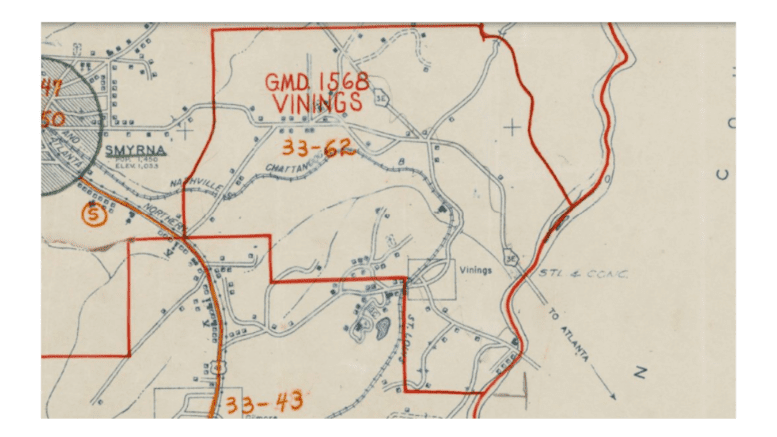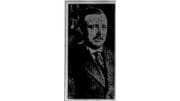Here’s a guide to using the recently release 1950 individual census records for Vinings.
In a previous Cobb by the Numbers we looked at the release of the complete individual records for the 1950 decennial census. By federal law detailed census records for individual households can’t be released until 72 years after the census. The detailed records are the handwritten standardized forms familiar to genealogists and historians.
Now we’re focused on how to get at the records for each part of the county. This article is mostly intended to give readers a means of looking further into what Vinings looked like at the time of that census, rather than to give an in-depth statistical or demographic analysis of the area.
Here’s an image of the 1950 census map that includes Vinings (I’ll show you how to get to an interactive version of the map later in the article):
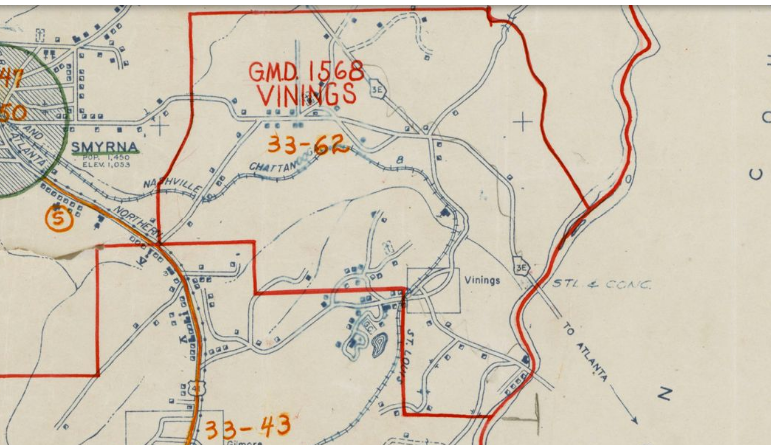
Unlike other cities and CDPs in Cobb County, the boundaries of Vinings have remained relatively constant since 1950. So if you look for records in enumeration district 62, and the northern part of 43 (which includes the Log Cabin Road area), you can get at all the records for Vinings.
An explanation for how to get to those enumeration districts is reprinted below from our earlier article.
How to get to the 1950 census records
To get to the records you can go to the search page at the National Archives by following this link, then hitting the “Begin Search” button and on the left-hand panel selecting “Georgia” and “Cobb County” under the state and county pull-down.
Or more quickly, you can go there via this link to the search that I’ve already done.
Cobb was divided into 67 enumeration districts in 1950, so you’ll be presented with a screen that looks like this:

At this point unless you’re familiar with historical geographies like the militia districts, you might have to muddle around a little to find the area you’re looking for, so clicking on the button marked “ED Maps” will give you an interactive map that is helpful in finding what you are looking for.
But for a simple example, let’s imagine I’m doing research on the Clarkdale thread mill district near Austell. I scrolled down to it, clicked on “Population schedules,” and came to this screen:
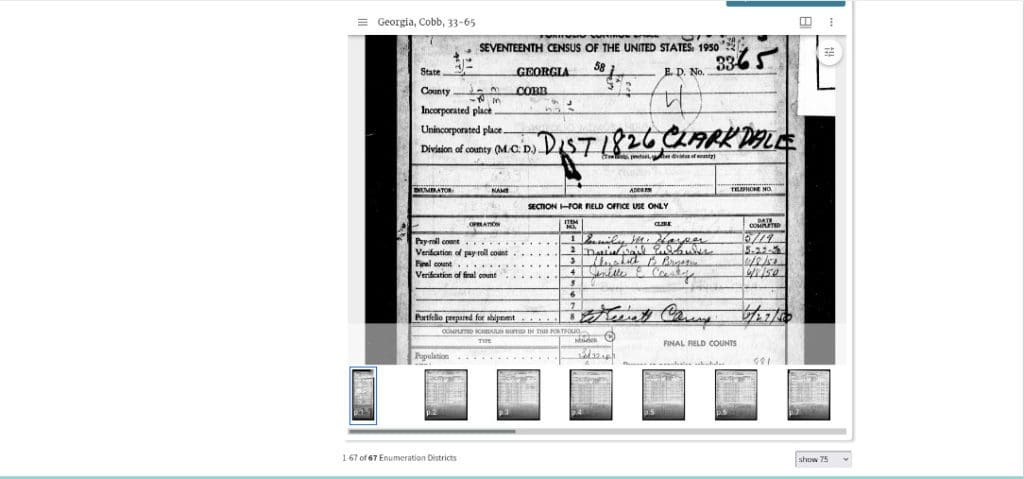
You can also get to a map of the enumeration district to make certain that if you’re searching for an individual you aren’t outside the boundaries of where that person lived.
You’ll have to use your mouse or key commands to pan around on the map and zoom in or out, but here’s what I got for the Clarkdale area.
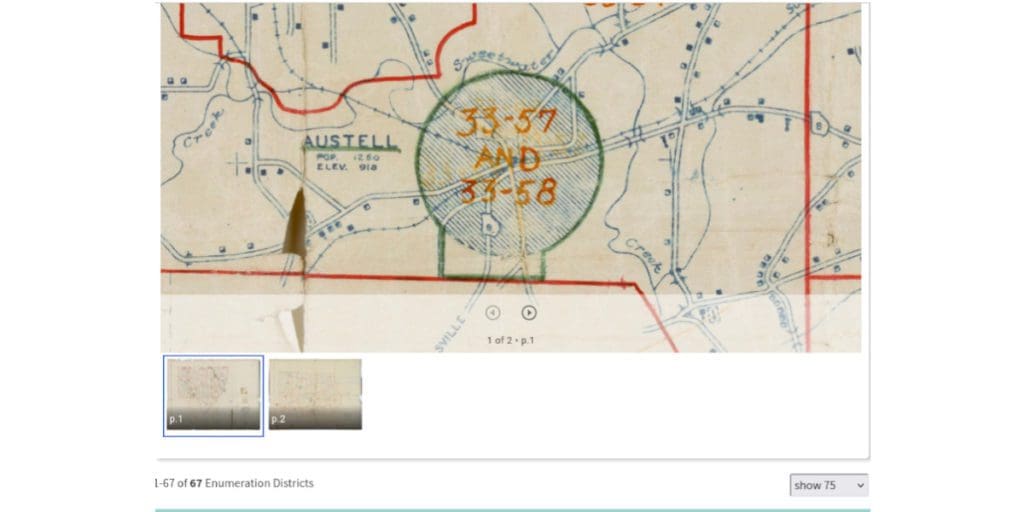
That should be enough to get you started in exploring a part of the county’s development when we were just at the beginning of the explosive growth to come.
How to used these records to build a more complete picture of Vinings in 1950
Finding the records is just a first step. The Census Bureau is getting volunteers to transcribe the records for different areas so that the records are searchable and more easily readable. To learn how to help with this project follow this link.

